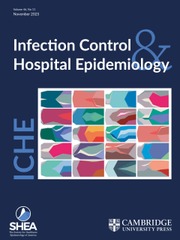No CrossRef data available.
Article contents
Group A Streptococcal Bacteremias Associated With Intravascular Catheters
Published online by Cambridge University Press: 21 June 2016
Extract
Most intravascular device-related infections are caused by staphylococci, presumably because the microbial flora of the skin surface is the major reservoir of microorganisms colonizing and infecting percutaneously-inserted intravascular cannulas.
Recently, we observed two episodes of group A streptococcal cellulitis and bacteremia related to infection of the subcutaneous tunnel of indwelling catheters. This prompted us to review our experience with nosocomial and community-acquired group A streptococcal bacteremias for the past year, and we identified a third catheter-related case. In our ongoing prospective surveillance of nosocomial bacteremias, we have not previously identified any other cases of intravascular catheter-related bacteremia caused by group A streptococcus. Likewise, in two large prospective studies of Hickman and Broviac catheter-related infections, the investigators did not report infections caused by this organism.
Information
- Type
- Readers' Forum
- Information
- Copyright
- Copyright © The Society for Healthcare Epidemiology of America 1990

